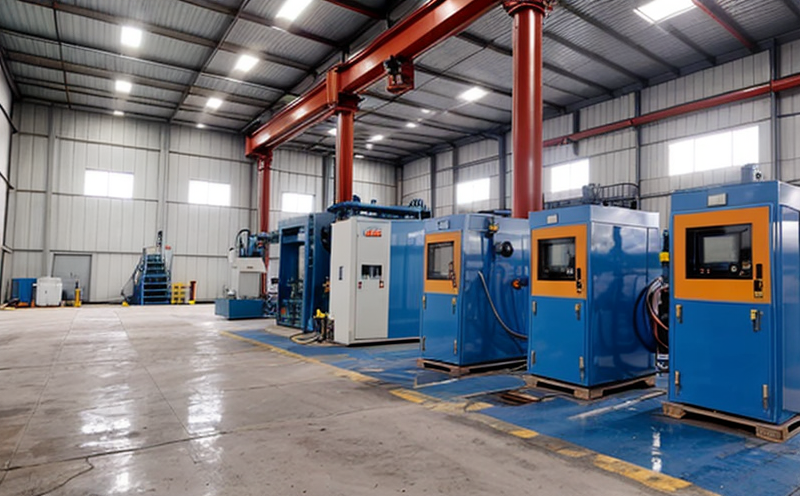EN 12407 Petrographic Examination of Natural Stones Testing
The EN 12407 standard is a crucial tool in the petrographic examination of natural stones, providing detailed guidelines for analyzing and characterizing rock samples. This service ensures compliance with international standards for quality control and material characterization in the mining sector.
This test involves the systematic investigation of rocks to determine their mineral composition, texture, and structure. The process is conducted under a microscope using polarized light or transmitted light. Petrographic examination helps identify the various constituents present within the stone, which is essential for understanding its durability, strength, and suitability for specific applications.
Before beginning the test, specimens are prepared by cutting thin sections of approximately 30 micrometers thick from the rock sample using a diamond saw. These sections are then mounted on glass slides and polished to achieve a smooth, flat surface. Once prepared, these samples undergo detailed examination through a petrographic microscope.
The analysis typically includes assessing various features such as grain size distribution, mineralogy, cementing agents, and fabric characteristics. This information is critical for determining the stone's resistance to weathering, abrasion, and chemical attack. The results of this examination are reported comprehensively in a detailed laboratory report that includes images captured during the process.
The EN 12407 standard specifies precise steps for preparing samples and conducting examinations. It also outlines criteria for interpreting the findings to ensure consistent results across different laboratories. This consistency is vital for maintaining quality standards and ensuring reliable data when selecting materials for construction projects or industrial applications.
Understanding the mineral composition of natural stones is particularly important in industries like mining, where material selection impacts project success. For instance, knowledge about the presence of specific minerals can influence decisions regarding extraction methods or processing techniques. Additionally, petrographic examination aids in identifying potential flaws or weaknesses within a stone that could affect its performance under real-world conditions.
In conclusion, EN 12407 Petrographic Examination provides valuable insights into natural stones' composition and structure, making it an indispensable part of quality assurance processes. By following this standardized procedure, industries can make informed decisions based on accurate data derived from rigorous testing methods.
Applied Standards
The EN 12407 Petrographic Examination of Natural Stones Testing is aligned with several international standards that govern the quality and performance requirements for natural stone materials. These include:
| Standard | Description |
|---|---|
| EN 12407 | Petrographic examination of natural stones - General requirements and guidelines. |
| ISO 9001 | Quality management systems - Requirements. |
| ASTM C779 | Petrographic examination of dimension stone materials. |
| BS 5628: Part 3 | Specification for the use of natural building stones - Petrographic examination and interpretation. |
These standards ensure that all testing procedures meet internationally recognized benchmarks, thereby enhancing credibility and reliability in material selection processes across various sectors.
Industry Applications
| Application | Description |
|---|---|
| Construction Projects | Ensuring durability and aesthetic appeal of structures. |
| Manufacturing Processes | Improving product quality by optimizing raw material usage. |
| R&D Initiatives | Promoting innovation through better understanding of stone properties. |
| Procurement Decisions | Selecting high-quality materials to meet project specifications. |
| Quality Control | Monitoring production processes and final products for compliance. |
| Environmental Impact Assessments | Evaluating the sustainability of stone extraction methods. |
| Renovation Projects | Preserving heritage structures while ensuring long-term viability. |
Use Cases and Application Examples
The EN 12407 Petrographic Examination plays a pivotal role in numerous scenarios within the mining industry. One common application involves assessing marble for use in architectural facades, where understanding its resistance to weathering is crucial. Another example pertains to granite used in countertops, requiring detailed analysis of texture and grain structure to ensure longevity.
In quarry operations, petrographic examination helps optimize extraction methods by identifying areas rich in valuable minerals while avoiding those prone to excessive wear or cracking. For instance, this technique was instrumental in selecting a particular limestone deposit for a new bridge project due to its exceptional durability under load conditions.
Furthermore, the examination aids manufacturers in developing new composite materials by blending different types of natural stones based on their unique properties. This approach not only enhances material performance but also promotes resource efficiency through targeted sourcing strategies.





